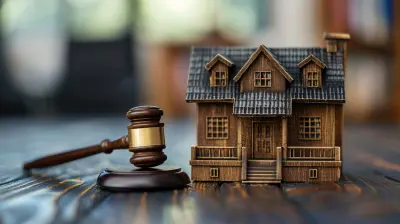The Role of Modern Architecture in Advancing Green Homes
23 November 2025
Sustainability is no longer just a buzzword—it’s a necessity. As climate change continues to impact our planet, the way we design and build our homes is evolving. Enter modern architecture, a game-changer in making green homes more efficient, stylish, and accessible.
But how exactly does modern architecture contribute to sustainable living? Let's explore how innovative design, smart materials, and cutting-edge technology are shaping the homes of the future.

The Shift Towards Sustainable Living
Gone are the days when sustainability was an afterthought. Today, homeowners prioritize eco-friendly living, not just to save on energy costs but also to reduce their carbon footprint. Green homes are designed to be energy-efficient, water-conscious, and environmentally friendly.Modern architecture plays a massive role in pushing this movement forward. Architects are now blending aesthetics with functionality, ensuring that homes don’t just look good but also contribute to a healthier planet.

Key Principles of Modern Architecture in Green Homes
Modern architecture isn’t just about sleek lines and open spaces—it’s about building smarter, using fewer resources, and maximizing efficiency. Here are the key principles driving this transformation:1. Passive Design for Energy Efficiency
One of the best ways to cut down on energy consumption is by designing homes that don’t heavily rely on artificial heating and cooling. Passive design focuses on:- Orientation of the building – Placing windows and doors strategically to maximize natural light and ventilation.
- Insulation and thermal mass – Using materials that retain heat in winter and stay cool in summer.
- Solar shading – Overhangs, shades, and tinted windows to prevent excessive heat gain.
By leveraging nature instead of resisting it, modern architecture reduces the need for HVAC systems, lowering both energy use and utility bills.
2. Sustainable Building Materials
What a home is made of can significantly impact its environmental footprint. Modern green homes utilize:- Recycled and reclaimed materials – Wood, metal, and glass repurposed from old structures.
- Bamboo and cork – Renewable alternatives to traditional flooring and cabinetry.
- Low-VOC paints and finishes – Reducing indoor air pollution and improving overall air quality.
The goal? To minimize waste, lower carbon emissions, and use materials that are both durable and eco-friendly.
3. Smart Technology Integration
Technology is transforming green homes, making them more efficient than ever. With smart systems, homeowners can:- Monitor and adjust energy consumption in real-time.
- Automate lighting, heating, and cooling based on occupancy.
- Install water-saving smart faucets and irrigation systems.
Imagine being able to control your home's energy usage from your smartphone—modern architecture is turning that into a reality.
4. Renewable Energy Solutions
No green home is complete without incorporating renewable energy. Modern architecture allows seamless integration of:- Solar panels – Generating clean energy while reducing reliance on fossil fuels.
- Wind turbines – Ideal for properties in windy locations, adding another energy source.
- Geothermal systems – Harnessing the earth’s natural heat for temperature control.
These renewable solutions not only lower energy costs but also contribute to a more sustainable lifestyle.
5. Water Conservation Strategies
Freshwater is a precious resource, and modern architecture ensures that it’s used wisely. Some standout strategies include:- Rainwater harvesting – Collecting and storing rainwater for irrigation or household use.
- Greywater recycling systems – Treating used water from sinks and showers for reuse.
- Low-flow fixtures – Cutting down on water wastage without compromising functionality.
Even small design choices, like xeriscaping (landscaping with drought-resistant plants), can make a huge difference in water conservation.

The Aesthetic Appeal of Green Homes
Who said sustainability has to be boring? Modern green homes embrace minimalism, open spaces, and natural elements to create stunning, functional living spaces. Think floor-to-ceiling windows that bring in natural light, green roofs overflowing with vegetation, and indoor-outdoor living that seamlessly connects residents to nature.The beauty of modern architecture is that it doesn’t sacrifice aesthetics for sustainability—it enhances both.

Challenges and Future Prospects
While the benefits of green homes are undeniable, there are still challenges that need addressing:- Initial Costs: Sustainable materials and renewable energy systems can be expensive upfront, though they save money in the long run.
- Limited Awareness: Many homeowners still don’t fully understand the advantages of green homes.
- Building Regulations: Some areas have outdated building codes that don’t support eco-friendly design innovations.
Fortunately, as awareness grows and technology advances, these challenges are becoming easier to overcome. Governments and private organizations are also offering incentives like tax breaks and rebates to encourage sustainable home construction.
Final Thoughts
Modern architecture is not just revolutionizing the way homes look—it’s reshaping how they interact with the environment. By prioritizing energy efficiency, sustainability, and smart technology, architects are paving the way for greener, healthier, and more cost-effective living spaces.Whether you're building a new home or renovating an existing one, considering green design principles is a step toward a more sustainable future. After all, our homes should not only be comfortable for us but also kind to the planet.
all images in this post were generated using AI tools
Category:
Green HomesAuthor:

Lydia Hodge

